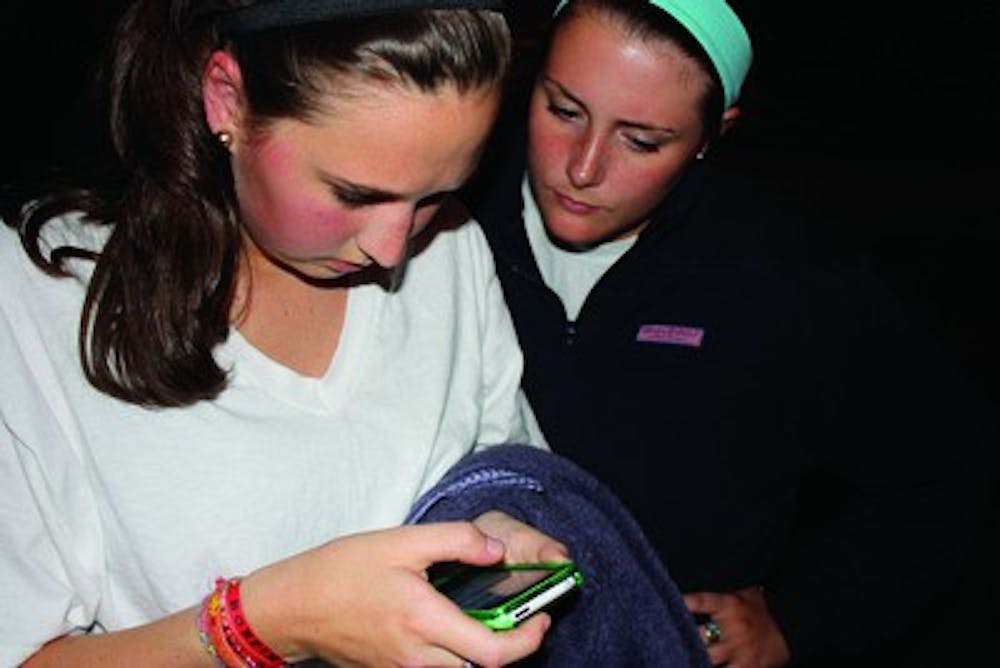Geocaching turns random items in tupperware containers into hidden treasure.
Using clues, participants search outdoor areas for caches. These caches are normally small containers filled with an assortment of objects.
This activity is inexpensive and doesn't require sophisticated equipment, according to the Geocaching site.
All participants need are a sturdy pair of shoes and a GPS device.
There aren't any hard and fast rules for Geocaching. To find a Geocache, log on to www.geocaching.com, create a free membership, click "Hide & Seek a Cache," enter the area code you want to search in and choose from a list of caches in the surrounding region.
Using the GPS, participants then enter the coordinates given on the Web site and begin the search.
Once someone has found the cache, they must sign the logbook and return the cache to its original location so someone else may find it.
Geocaching asks only a few things of its participants: to leave something of equal or greater value if you take something from the cache, to write about your experience in the logbook and to post stories and photos of your adventure online.
One Geocache participant is Josh Dutcher. He is a senior at Huntsville High School who plans to come to Auburn next fall and major in engineering.
"I usually go with a group of six or more people," Dutcher said.
The future Auburn student reported finding clues in unexpected places, such as the back of stop signs, Sonic, Chick-fil-A, Target and beneath a park bridge in St. Louis, Miss.
"We were Geocaching in the middle of nowhere in Huntsville and unknowingly trespassed on someone's property," Dutcher said. "We were driving forward on a curvy road, and this guy chased us while he was driving in reverse. Needless to say, we never found that one."
Though not a familiar name to some Auburn students, Geocaching has made its mark.
Caches are located in 100 sites worldwide and are on every continent, including Antarctica.
As of Aug. 25, there are more than 882,600 active caches.
Geocaching advocates being environmentally friendly with its "Cache In Trash Out" program.
This large weekend program involves cleaning up parks and other outdoor areas.
It's 7th Cache In Trash Out event will be held on May 2 and 3 this year.
Punching in 36849, the zip code for Auburn's campus, 180 results were displayed.
Names of caches range from predictable, "Auburn Hall Cache," to ones with which students may identify, "Parking Nazis Attack!"
One cache on Auburn's campus is called "Old Soldiers Never Die."
The first clue leads to Pine Hill cemetery on Armstrong Street, and then to a section dedicated to Civil War veterans: "This tour starts with a Confederate captain who bears the same name as the street upon which you entered. He served as the commander of Company F in an Alabama infantry regiment that fought at the Battle of Shiloh in April 1862."
This particular cache gives detailed instructions and is much longer in description than other caches, some of which give sparse clues.
Another cache in Auburn is called "Rotary ground." Its only clue is the haltingly read, "Small camo container bring your own pen. Enjoy being a kid again no one is looking." An additional hint must be decoded with a decryption key.
The activity has a limited following; Geocaching is a bit of an undercover favorite.
However, the movie Splinterheads, scheduled for theater release this November, spotlights Geocaching.
With increasing publicity, positive reviews from site members and participants who continue to tell their friends about their adventures, Geocaching may become a popular activity among Auburn students.
Do you like this story? The Plainsman doesn't accept money from tuition or student fees, and we don't charge a subscription fee. But you can donate to support The Plainsman.





